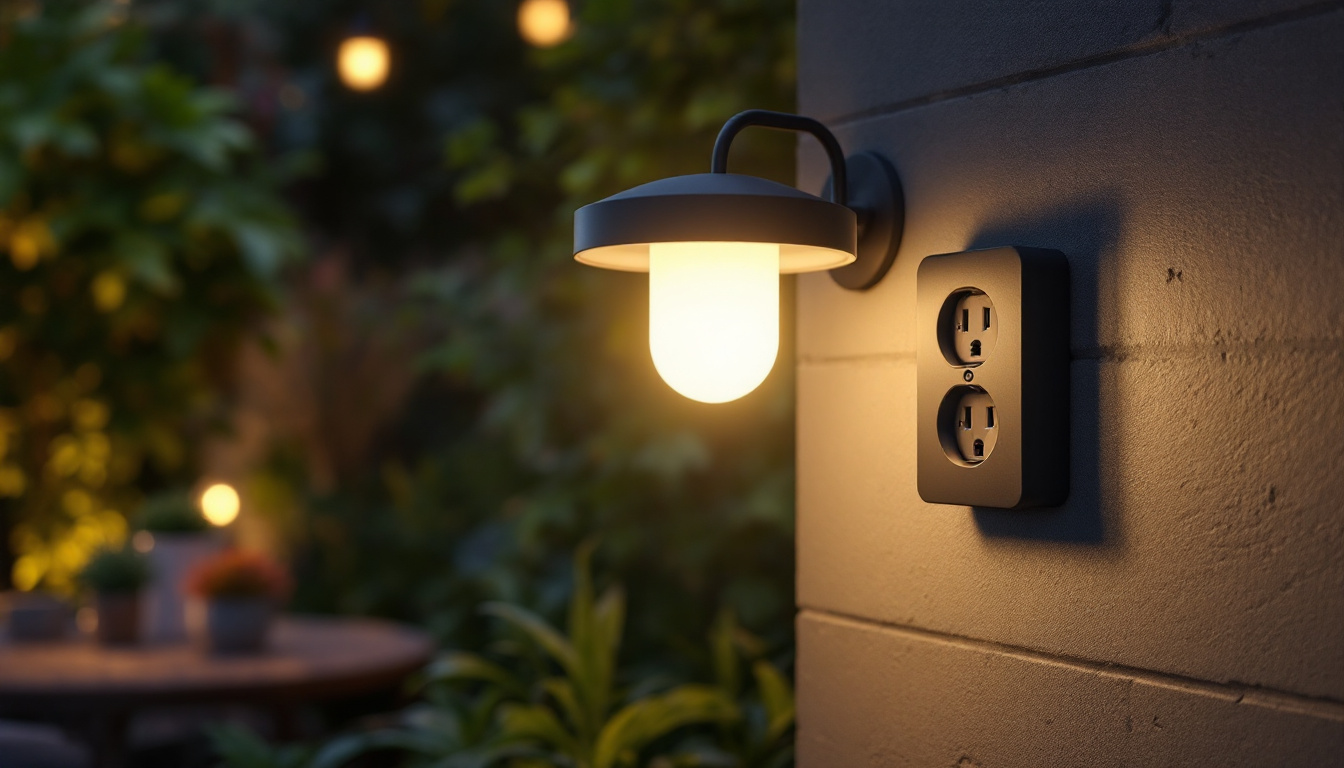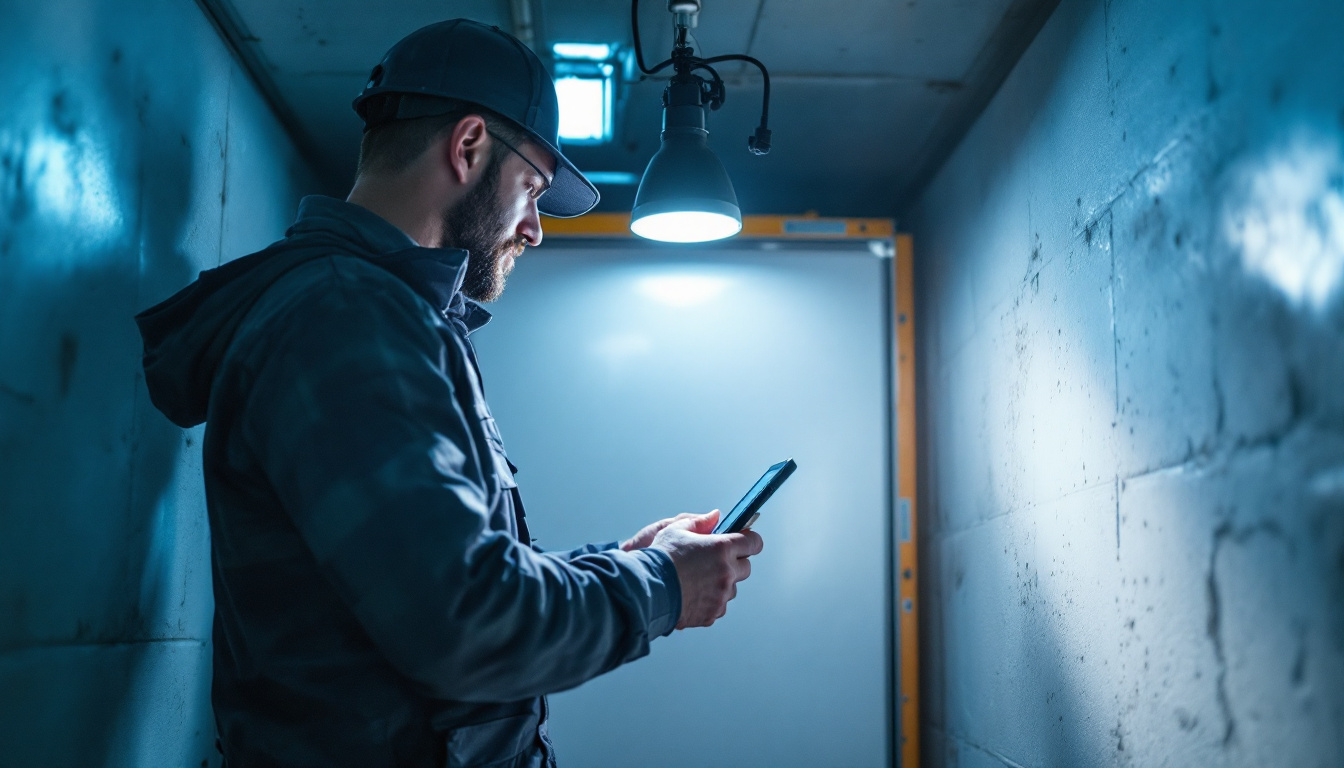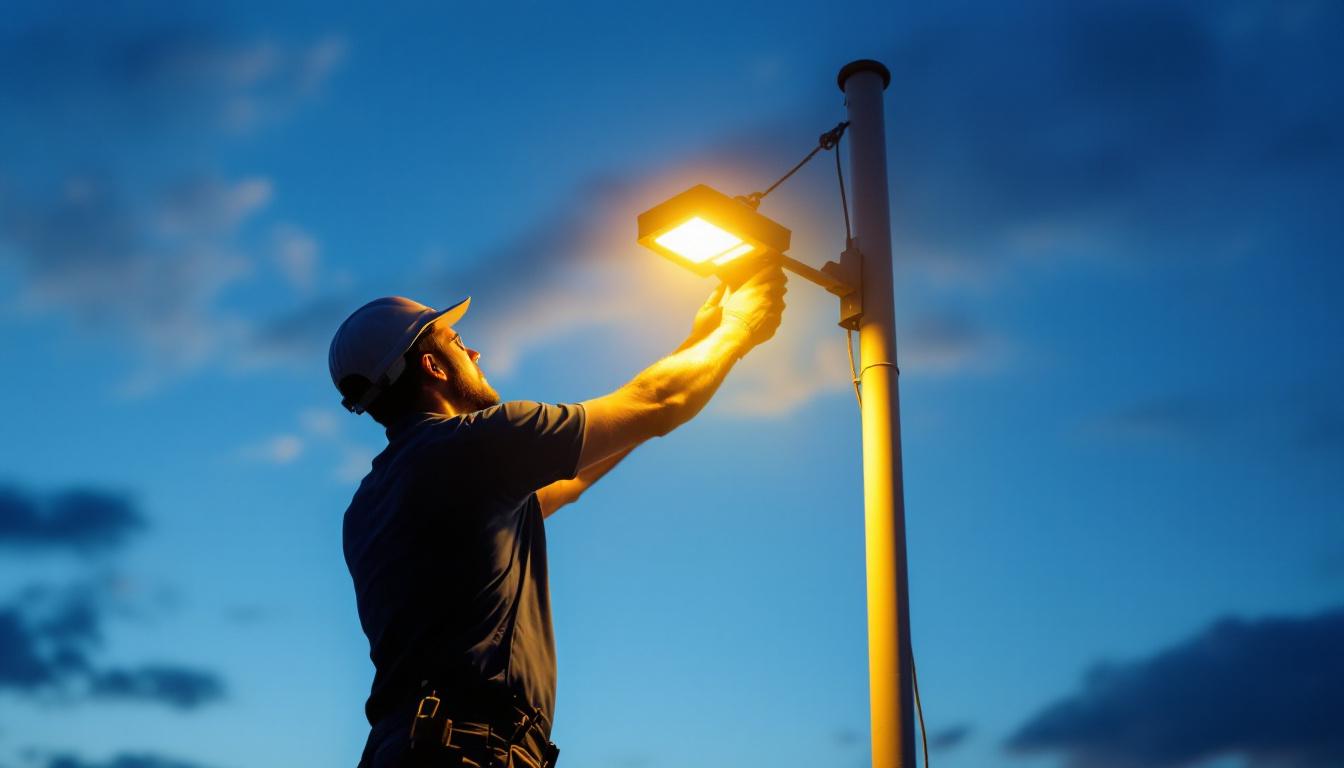
In the realm of outdoor lighting, the integration of light fixtures with outlets presents a unique opportunity for lighting contractors. This combination not only enhances the aesthetic appeal of outdoor spaces but also offers functional benefits that can significantly improve the usability of these areas. Understanding the intricacies of outside light fixtures with outlets is essential for contractors looking to provide comprehensive solutions to their clients.
Before diving into the technicalities, it’s crucial to grasp what an outside light fixture with an outlet entails. These fixtures serve dual purposes: they illuminate outdoor areas while also providing a convenient power source for various devices. This dual functionality can be particularly appealing to homeowners who wish to enhance their outdoor living spaces, allowing for seamless transitions between day and night activities.
When selecting outdoor light fixtures with outlets, design plays a pivotal role. Lighting contractors should consider the architectural style of the home and the surrounding landscape. Fixtures should complement the overall aesthetic, whether it’s modern, traditional, or rustic. The choice of materials, colors, and finishes can greatly influence the visual impact of the installation. For instance, sleek metal fixtures may suit a contemporary home, while wrought iron or wood finishes might be more appropriate for a cottage-style residence.
Moreover, the placement of these fixtures is equally important. Strategic positioning can enhance the ambiance while ensuring that the outlet remains accessible for use. For example, placing fixtures near patios or decks can facilitate the use of outdoor appliances, such as string lights or electric grills, making these spaces more functional. Furthermore, incorporating dimmable options can allow homeowners to adjust the brightness according to the occasion, whether it’s a lively gathering or a quiet evening under the stars.
Outdoor light fixtures with outlets provide versatility that can cater to various needs. They can be used for seasonal decorations, outdoor parties, or even for practical purposes like powering tools during landscaping projects. This functionality can be a selling point for contractors when discussing options with clients. Additionally, these fixtures can serve as charging stations for devices like smartphones or tablets, making them incredibly useful for gatherings or family events where people want to stay connected.
Additionally, the ability to plug in devices directly into the light fixture eliminates the need for extension cords, reducing clutter and potential tripping hazards. This feature enhances safety, which is a significant concern for many homeowners. With the right fixtures, homeowners can also explore smart lighting options, integrating technology that allows for remote control of lighting and outlets through mobile apps. This not only adds convenience but also enhances security by enabling homeowners to schedule lighting to deter intruders when they are away.
Installing outside light fixtures with outlets requires a thorough understanding of electrical codes and safety standards. It is essential for lighting contractors to be well-versed in these regulations to ensure compliance and safety during installation. Familiarity with local codes can vary significantly, so contractors should always consult the National Electrical Code (NEC) and any specific local amendments to ensure that all installations meet the necessary requirements.
The wiring for outdoor fixtures must be rated for exterior use, typically using weatherproof materials to withstand the elements. Contractors should ensure that the circuit can handle the additional load of both the light fixture and any devices plugged into the outlet. This consideration is crucial to prevent overloads, which can lead to tripped breakers or, worse, electrical fires. It’s advisable to calculate the total wattage of all devices that may be connected and to use a circuit that is appropriately rated, often a 15 or 20-amp circuit, depending on the anticipated load.
Moreover, using GFCI (Ground Fault Circuit Interrupter) outlets is a must for outdoor installations. These outlets provide an added layer of safety by cutting off power if they detect a ground fault, protecting users from electric shock. Ensuring that all installations meet local electrical codes will not only enhance safety but also instill confidence in clients regarding the quality of work performed. Regular testing of GFCI outlets is recommended to ensure they are functioning correctly, as these devices can wear out over time or become less sensitive due to environmental factors.
Given the outdoor setting, durability and weatherproofing are paramount. Fixtures should be designed to resist rust, corrosion, and UV damage. Contractors should select products that are rated for outdoor use, ensuring they can withstand harsh weather conditions without compromising performance. It is also beneficial to consider the materials used in the fixtures; for instance, aluminum and stainless steel are excellent choices due to their resistance to the elements and longevity.
Additionally, proper sealing and installation techniques are critical in preventing moisture intrusion, which can lead to electrical failures or damage to the fixture itself. Using silicone sealants and ensuring that all connections are secure can help mitigate these risks. Furthermore, incorporating drip loops in the wiring can prevent water from traveling along the wire and into the fixture, while also ensuring that any water that does accumulate can easily drain away. Regular maintenance checks, including cleaning fixtures and inspecting for signs of wear or damage, can greatly extend the lifespan of outdoor lighting installations, ensuring they remain both functional and aesthetically pleasing throughout the seasons.
With a plethora of options available in the market, selecting the right outside light fixture with an outlet can be daunting. However, understanding the specific needs of the client and the intended use of the space can guide this decision.
There are various types of outdoor light fixtures available, each serving different purposes. Wall-mounted fixtures, post lights, and pendant lights are popular choices for illuminating outdoor areas. Each type has its own advantages and can be paired with outlets in different ways.
For instance, wall-mounted fixtures can be installed near entryways or patios, providing both light and a convenient outlet for seasonal decorations. On the other hand, post lights can illuminate pathways while also serving as a power source for outdoor tools or devices.
In today’s environmentally conscious market, energy efficiency is a significant factor to consider. LED lighting options are increasingly popular due to their longevity and lower energy consumption. Contractors should emphasize the benefits of LED fixtures to clients, including reduced electricity bills and minimal maintenance.
Moreover, incorporating smart lighting solutions can enhance the functionality of outdoor spaces. Smart fixtures allow homeowners to control lighting remotely, set schedules, and even integrate with home automation systems. This added convenience can be a significant selling point for contractors.
Proper installation is key to ensuring the longevity and functionality of outside light fixtures with outlets. Following best practices not only guarantees safety but also enhances the overall performance of the installation.
Before installation, it is essential to plan the layout carefully. This involves determining the optimal locations for fixtures and outlets based on the intended use of the space. Lighting contractors should consider factors such as existing landscaping, outdoor furniture placement, and the overall flow of the area.
Creating a lighting plan that includes both the fixtures and the outlets can help visualize the final outcome, ensuring that the installation meets the client’s expectations. Additionally, this planning phase allows for adjustments to be made before any physical work begins, saving time and resources.
After installation, thorough testing is crucial. Lighting contractors should ensure that all fixtures are functioning correctly and that outlets are providing power as intended. This includes checking for any flickering lights or faulty connections that may need to be addressed.
Moreover, conducting a final walkthrough with the client can help identify any areas for improvement or adjustments. This step not only reinforces the contractor’s commitment to quality but also enhances client satisfaction.
Clients should be informed about the importance of regular cleaning to remove dirt, debris, and potential obstructions that may affect the performance of the light fixtures. Additionally, checking for any signs of wear or damage, such as frayed wires or rust, can help catch issues before they escalate.
Encouraging clients to inspect the outlets periodically for any signs of moisture or corrosion is also crucial. This proactive approach can prevent future electrical issues and ensure the longevity of the installation.
Providing clients with documentation that includes warranties, installation details, and maintenance guidelines can enhance their overall experience. This information empowers clients to take care of their outdoor lighting systems effectively.
Moreover, offering ongoing support and being available for questions or concerns can foster a positive relationship with clients, potentially leading to future projects or referrals. Building trust and demonstrating expertise can set a contractor apart in a competitive market.
Outside light fixtures with outlets present a unique opportunity for lighting contractors to enhance outdoor spaces while providing functional benefits. By understanding the design considerations, electrical requirements, and installation best practices, contractors can deliver high-quality solutions that meet the needs of their clients.
Moreover, emphasizing the importance of maintenance and client education can ensure the longevity and effectiveness of these installations. As outdoor living spaces continue to gain popularity, the demand for versatile lighting solutions will only increase, making it essential for contractors to stay informed and adaptable in their approach.
In conclusion, mastering the nuances of outside light fixtures with outlets not only elevates the contractor’s skill set but also enhances the overall satisfaction of clients, paving the way for successful projects and lasting relationships.
Ready to take your outdoor lighting projects to the next level? At LumenWholesale, we provide lighting contractors with the highest quality, spec-grade lighting products at unbeatable wholesale prices. Say goodbye to local distributor markups and hello to superior lighting that meets the highest industry standards. With our extensive selection, you can ensure every outdoor space shines with reliability and high performance. Plus, with free shipping on bulk orders, you’ll enjoy the best value without any hidden fees. Elevate your lighting solutions today and experience the perfect blend of quality, affordability, and convenience. Visit LumenWholesale for Wholesale Lighting at the Best Value.

Discover innovative cost-saving strategies for lighting contractors with LED portable lights for freezers.

Discover essential strategies and expert advice for lighting contractors in “Light For Flag.” This article delves into innovative techniques, industry trends, and practical tips to enhance your projects and boost client satisfaction.

Discover how LED flood light bulbs are revolutionizing outdoor lighting solutions with energy efficiency, durability, and versatility.

Discover essential strategies and tips for lighting contractors on transforming basements with string lights.